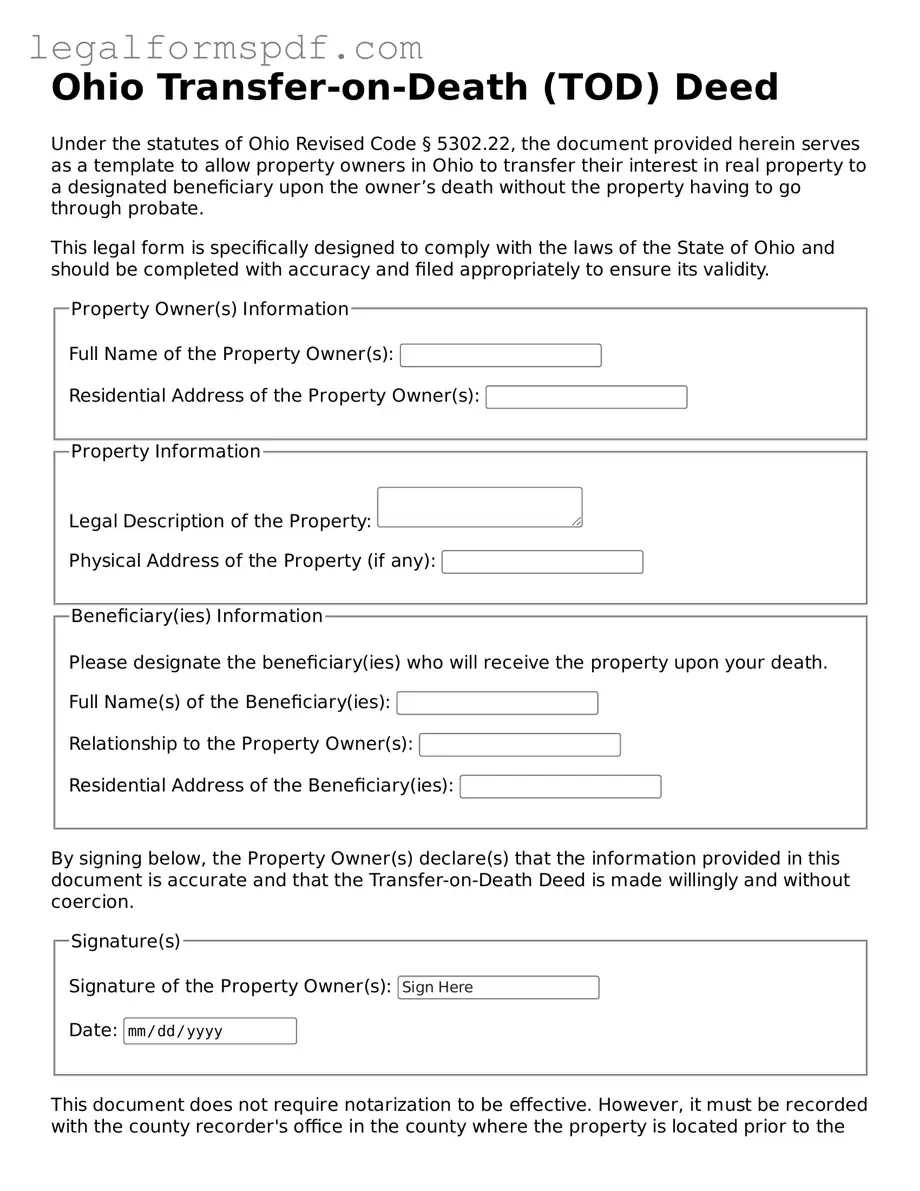What is a Transfer-on-Death (TOD) Deed in Ohio?
A Transfer-on-Death (TOD) deed in Ohio allows property owners to pass on real estate to a beneficiary upon their death without the need for probate court proceedings. This type of deed is a simple estate planning tool that permits the direct transfer of the property to the named beneficiary, who will automatically assume ownership when the current owner passes away.
Who can use a TOD deed in Ohio?
Almost any property owner in Ohio can use a TOD deed. This includes individuals who own residential homes, certain types of commercial properties, and even vacant land. To execute a TOD deed, the property owner must be of sound mind and competent to make such decisions. Moreover, the property must be located in Ohio.
How do you create a TOD Deed in Ohio?
Creating a TOD deed in Ohio involves several key steps. Firstly, the deed must be properly drafted to include the legal description of the property, the name of the beneficiary, and must clearly state the intention to transfer the property upon death. The property owner must then sign the deed in the presence of a notary public. Finally, the completed deed must be filed with the county recorder’s office in the county where the property is located before the owner's death.
Can you change your mind after recording a TOD deed?
Yes, a property owner can change their mind after recording a TOD deed. To revoke or change the beneficiary, the owner must execute a new deed that either revokes the previous TOD deed or names a new beneficiary. This new deed must also be notarized and recorded with the county recorder’s office to be effective.
What happens to the mortgage on the property when it transfers via a TOD deed?
When a property with an outstanding mortgage is transferred via a TOD deed, the beneficiary inherits the property along with the mortgage. The beneficiary becomes responsible for continuing the mortgage payments. If the mortgage isn't maintained, the lender may proceed with foreclosure on the property.
Are there any limitations to what can be transferred with a TOD Deed in Ohio?
Yes, there are some limitations. A TOD deed can only be used for real estate and cannot be used to transfer personal property, such as vehicles or household goods. Furthermore, TOD deeds are not applicable for properties held in joint tenancy or as community property with right of survivorship. It's crucial to consider these limitations and consult with a legal professional when planning your estate.
